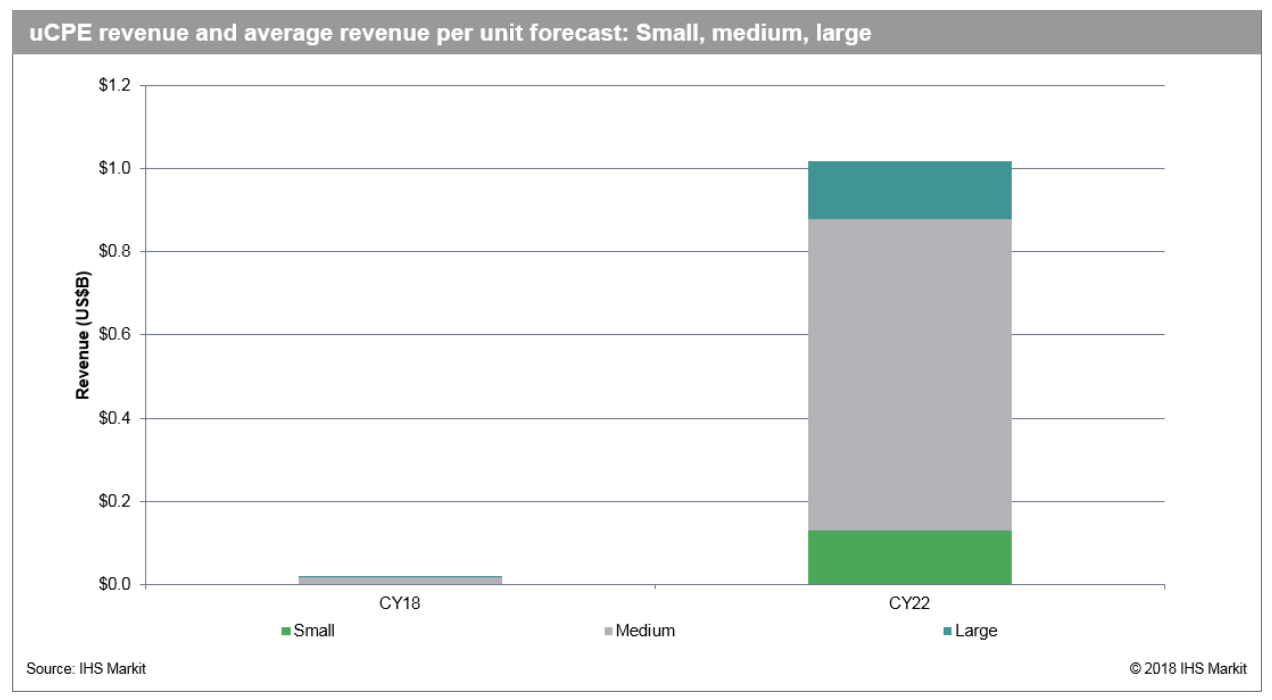Arm, Vodafone Demo Virtual Telco Platform

The telecommunications sector is embracing enterprise technologies such as server virtualization via an emerging deployment model dubbed universal CPE, for customer premises equipment. CPE generally includes on-premise equipment such as routers, network switches and base stations as well as software-defined wide-area networks and Ethernet access devices.
For network vendors, universal CPE and related virtual networking appliances are an emerging market expected to top $1 billion by the end of 2022.
Telecom equipment vendors have taken notice, using network functions virtualization and related approaches to reduce the number of devices required to provision network services.
This week, semiconductor IP vendor Arm unveiled a partnership with U.K. telecommunications carrier Vodafone (NASDAQ: VOD), NXP Semiconductors (NASDAQ: NXPI) and U.S. equipment maker Telco Systems to develop and test a prototype uCPE platform that supports enterprise services like SD-WAN and network routing. The partners claim their approach provides CPE reliability along with the flexibility to add to subtract network services.
The prototype system consists of a hybrid virtualization and application container platform provided by Telco Systems, Mansfield, Mass. Applications were tested on Layerscape processors designed by NXP and based on Arm’s Neoverse microarchitecture, introduced last year as a general-purpose cloud and edge computing framework.
Vodafone recently tested the uCPE platform against “enterprise-class” use cases. Arm said the U.K. trial was the first time the partners demonstrated an “orchestrated mix of container- and virtual machine-based network functions” running on the same platform.
The VM- and container-based applications initially ran on a 4-core Arm Cortex-A72 processor, scaling to an 8-core Arm processor that demonstrated 15 Gbps throughput carrying Internet traffic. The performance gains were attributed in part to offloading virtual network switching to a hardware accelerator in order to meet peak traffic demand.
“The collaboration on uCPE highlights the increasing functionality Arm architectures can provide in the evolution of a cloud-native approach to uCPE,” said Vodafone’s Gavin Young.
Arm said uCPEs based on its design run cloud-native software stacks that can be scaled up to 32 cores, providing enterprise-grade connectivity. The virtual telco platform is also touted as scalable from a remote office or retail location to a company headquarters.
The partners hope to catch an expected wave of carriers like Vodafone that are expected to extend capabilities like network functions virtualization beyond datacenters and central offices to individual customer locations. For example, Omdia forecasts that uCPEs could provide “pico cloud” capabilities that incorporate computing, storage and switching for functions ranging from SD-WAN, virtual firewalls and network appliances.
Omdia forecasts the uCPE market will reach $1.2 billion in 2022. After a lengthy period of lab testing and field trials, the market tracker predicted “the uCPE market is underway and on the rise.”
Related
George Leopold has written about science and technology for more than 30 years, focusing on electronics and aerospace technology. He previously served as executive editor of Electronic Engineering Times. Leopold is the author of "Calculated Risk: The Supersonic Life and Times of Gus Grissom" (Purdue University Press, 2016).











